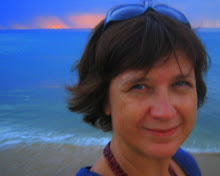
As the plane circled Maputo, the Catedral da Nossa Senhora da Conceição (RC Cathedral of Our Lady of the Immaculate Conception) stark white exterior visible from the sky, I contained my annoyance with the 1 hour delay. The delay was due to the arrival of the President Armando Emílio Guebuza in Beira. (I noticed his plane was bigger than ours.) A couple of days later whilst making my way from Maputo to Dar es Salaam, I encountered him again in Pemba, our second stop on this 'matatu' of air travel experiences. Red Frelimo flags invigorated what appeared to be rather small but enthusiastic shows of support at these two locations. App arently the true challenge for Frelimo in this week's election is not winning (not an issue since the opposition is split) but public confidence reflected in voter turnout.
arently the true challenge for Frelimo in this week's election is not winning (not an issue since the opposition is split) but public confidence reflected in voter turnout.
Populist figures and images are ubiquitous reminders of the country's turbulent past. Modernist and sometimes brutalist buildings with Soviet-era lettering and imagery are located on roads with names that includes every revolutionary active in the 20thC: Lenin, Machel, Nyerere, Mao... Early colonial buildings fade into the background with the exception of the Cathedral and Eiffel's iron building and station. In front of the station I bumped into an old friend from Namibia - our serendipitous encounter is a welcome reminder of the resilience of joint interests and passions (architecture, cities, art) . Among the T-shirts sporting images of Bob Marley and Che Guevara, I engaged in conversation with a eloquent woman selling stylish handbags (of course I bought one!); she tells me of her journey to Mozambique from her native Uganda, through Zimbabwe... It is clear to me that these were not journeys of choice. Movement across borders are not necessarily the result of shared interests but the divisive forces of war and discord. Yet it speaks of a innate ability to adapt and be mobile which I find strangely intriguing.
 arently the true challenge for Frelimo in this week's election is not winning (not an issue since the opposition is split) but public confidence reflected in voter turnout.
arently the true challenge for Frelimo in this week's election is not winning (not an issue since the opposition is split) but public confidence reflected in voter turnout.Populist figures and images are ubiquitous reminders of the country's turbulent past. Modernist and sometimes brutalist buildings with Soviet-era lettering and imagery are located on roads with names that includes every revolutionary active in the 20thC: Lenin, Machel, Nyerere, Mao... Early colonial buildings fade into the background with the exception of the Cathedral and Eiffel's iron building and station. In front of the station I bumped into an old friend from Namibia - our serendipitous encounter is a welcome reminder of the resilience of joint interests and passions (architecture, cities, art) . Among the T-shirts sporting images of Bob Marley and Che Guevara, I engaged in conversation with a eloquent woman selling stylish handbags (of course I bought one!); she tells me of her journey to Mozambique from her native Uganda, through Zimbabwe... It is clear to me that these were not journeys of choice. Movement across borders are not necessarily the result of shared interests but the divisive forces of war and discord. Yet it speaks of a innate ability to adapt and be mobile which I find strangely intriguing.

When I retire one day Tex
ReplyDelete